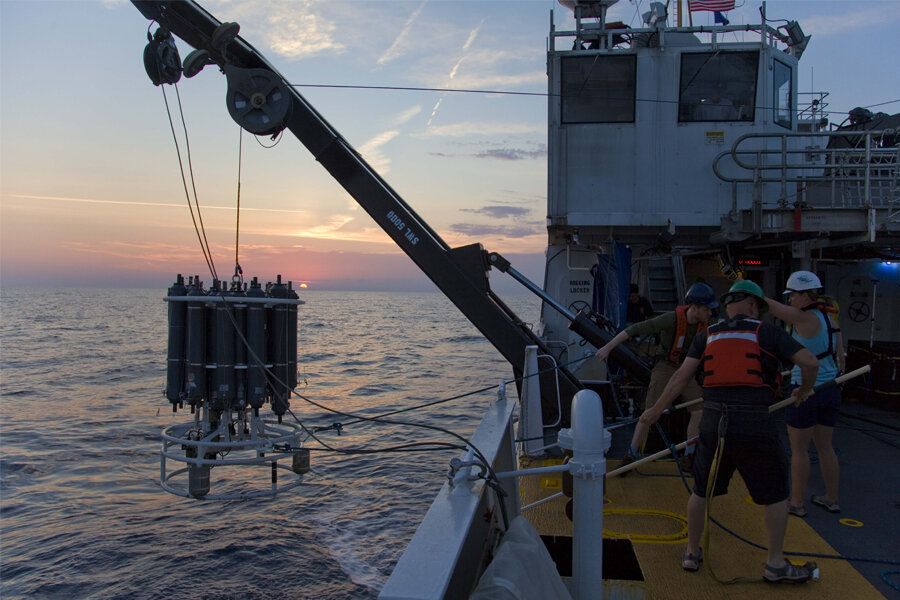
Nancy Foster, a NOAA ship, recovers a CTD instrument used to collect water samples from the ocean. Credit: Michael Stukel/Florida State UniversityResearchers from Florida State University discovered that almost all of the nitrogen used to fertilize the Gulf of Mexico's open ocean is transported into the gulf by nitrogen from the coasts.Nature Communications published the work. It is essential to understand the food web of that ecosystem. This is where many commercially important species of fish spawn, including the Atlantic Bluefin Tuna, which was the focus of the research.Michael Stukel, associate professor in the Department of Earth, Ocean and Atmospheric Science and co-author of this paper, stated that the open-ocean Gulf of Mexico was important for many reasons. It's an ocean desert with few predators that threaten larvae. This is why it's a good spawning ground to several species of mahi-mahi and tuna. You will find many other organisms out there in the open ocean.Phytoplankton is the foundation of the food web in Gulf of Mexico, which supports new larvae and other organisms. Like plants on the ground, phytoplankton needs sunlight to grow. Researchers wanted to find out how nitrogen was getting into the gulf.A few hypotheses were considered. The first was that nitrogen might have come from the deep sea. Another possibility was that the larvae were being supplied by a phytoplankton called a nitrogen fixer. They also considered the possibility that nitrogen could be entering the ocean from the coast's shallower regions.Plankton is found in the open-ocean Gulf of Mexico. Trichodesmium is the golden tufts at the bottom left. The long organism in middle is a Chaetognath. Many of the out-of focus blobs are copepods. Credit: Michael Stukel/Florida State UniversityThey combined measurements taken at sea during research cruises in 2017- 2018 with data from satellite observations and models to find that organic matter from the coasts accounts for more than 90% of the nitrogen entering the open ocean in the Gulf.Scientists knew from the beginning that large, swirling currents act as slow-moving storms in oceans and move water from the coast to the interior of the Gulf. Researchers believe that the nitrogen is likely to be moved by those eddies. However, they did not answer this question in their study.Climate change has an impact on how water at the ocean's surface and in deeper waters. It is difficult to understand how climate change will impact these lateral currents.This is an important aspect of the ecosystem because it's crucial to understand. Currents that connect coastal areas with the nutrient-poor open sea are key to the survival of larval fish species like tuna and other species found in the open-ocean Gulf of Mexico.Stukel stated that "if we want to understand the future response of this ecosystem to climate change, then we must understand how all these lateral transports function in the ocean." Scientists who study biogeochemical balances, especially in basins that are enclosed by productive coastlines like the Gulf of Mexico, should closely examine how lateral transport impacts those ecosystems.Continue reading Researchers monitor nutrient transport in Gulf of MexicoFurther information: Thomas B. Kelly and colleagues, Lateral advection support nitrogen export in the oligotrophic, open-ocean Gulf of Mexico. Nature Communications (2021). Information from Nature Communications Thomas B. Kelly and colleagues, Lateral advection support nitrogen export in the open-ocean oligotrophic Gulf of Mexico (2021). DOI: 10.1038/s41467-23678-9
